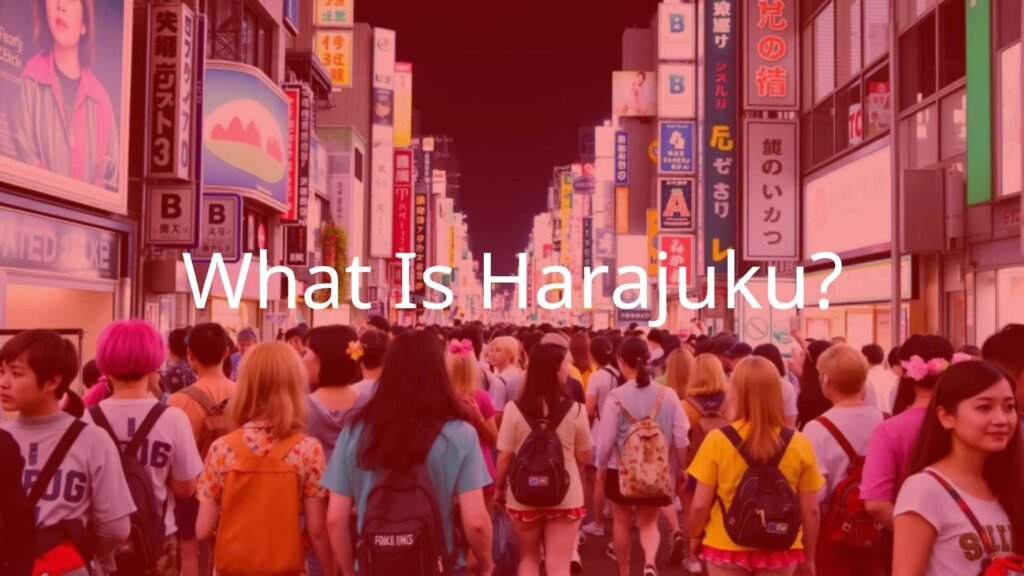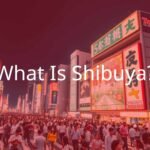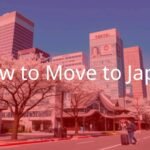Harajuku isn’t just a spot on the map; it’s a lively part of Tokyo, Japan, best known for its bright youth culture and fashion that stands out. Here, people use clothes and style to express who they are, and every street corner shows off new trends and bold looks. Whether you love fashion, Japanese pop culture, or are simply interested in Tokyo’s many faces, Harajuku is a place where creativity runs wild.

Which Area of Tokyo Is Called Harajuku?
Harajuku is found in the Shibuya ward of Tokyo. While the name “Harajuku” is famous, its borders aren’t always clear. On official maps of Shibuya, it matches up with Jingūmae 1-chome to 4-chome, but most people think of Harajuku as the area stretching from Harajuku Station to Omotesando.
The spirit of Harajuku spreads into many side streets like busy Takeshita Street and the more relaxed Cat Street. These streets connect neighborhoods from Sendagaya in the north down to Shibuya in the south and are home to a mix of unique shops, cafés, and cultural spots. Harajuku encourages walking around-there’s always something new and unexpected to see.

What Makes Harajuku Famous Internationally?
Harajuku is known around the world because it’s the main spot for youth culture and unique fashion in Japan. It’s where new styles start, and personal expression is celebrated with energy. The area is linked with many different fashion trends-lots of color, layers, and a fun attitude that ignores typical clothing rules.
Harajuku is also famous for “kawaii” (cute) culture. Its fun foods-like colorful grilled cheese or huge cotton candy-add to its charm. International stars, including Lady Gaga and Kyary Pamyu Pamyu, have helped spread Harajuku’s style to a global audience.
Common Associations and Misconceptions about Harajuku
Many people think of Harajuku as full of teenagers in wild clothes and bright colors, especially on Takeshita Street. This is partly true, but Harajuku is actually home to many different styles and groups, not just one look.
One mistake, especially in Western media, is thinking Harajuku fashion is just kawaii, Lolita, or Decora styles. While these are popular in Harajuku, they are only a part of what you’ll find. Many other subcultures and age groups gather here. For example, Omotesando draws an older, wealthier crowd and features luxury shops and high-end food. Harajuku attracts people both from Japan and abroad, all looking for something special.
How Has Harajuku Developed Over Time?
Today’s trendy Harajuku has a long history, starting as a small village and growing into a world-famous center for fashion and youth culture. Its changes reflect Japan’s larger changes through different time periods.
Early History and Origins
Long ago, Harajuku was a small post town on the Kamakura Highway. The name “Harajuku” means “meadow lodging.” Even in ancient times, it was known as a meeting place for soldiers. During the Edo period, the Iga clan built a house to help guard Tokyo and many samurai families lived there. The area was mostly farmland, and jobs like rice cleaning and flour milling were common. However, the land wasn’t very good for farming, so the village didn’t grow much compared to its later popularity.
Harajuku in the 20th Century
Harajuku changed a lot in the 20th century. When the Meiji period began in 1868, Harajuku had just joined Tokyo Prefecture. The area became easier to reach after the Yamanote Line opened Harajuku Station in 1906. Omotesando, a road that leads to Meiji Shrine, was also widened to make way for more visitors.
In 1945, a big part of Harajuku was destroyed during the Great Tokyo Air Raid. After the war, new housing for U.S. soldiers (Washington Heights) was built where Yoyogi Park now stands. Shops like Kiddyland opened to cater to these new residents, setting the stage for Harajuku’s rise as a shopping hub.
Influence of Postwar Culture and Subcultures
After the war, more Western styles and new Japanese youth cultures mixed in Harajuku, helping subcultures flourish. The 1964 Tokyo Olympics brought more attention and new sports buildings to the area. In the 1970s, fashion-focused youth started gathering in Harajuku, and places like Palais France and Laforet Harajuku opened.
The 1980s saw “takenoko-zoku” (teenage dance groups) on Takeshita Street and on Sundays, when streets closed to traffic, big crowds came to watch live bands. This street culture helped start the many different fashion groups that Harajuku is now known for. Although the pedestrian zone ended in 1998, Harajuku’s spirit of creativity stayed strong.
Modern Era: Global Impact and Pop Culture
In the 1990s and 2000s, Harajuku’s style attracted bigger fashion chains from around the world-like Gap, H&M, and Uniqlo-alongside smaller Japanese stores. The Ura-Harajuku or “Harajuku Backstreets” became known for unique, trend-setting brands. The opening of Omotesando Hills in 2006 brought even more high-end shops.
Today, Harajuku is always changing, but it is still the main place to see Japanese street fashion and youth culture. Spots like the Jingu Bashi bridge and people dressing up in creative outfits make Harajuku famous worldwide, helped by celebrities and pop singers who celebrate the area in their music and style. Even difficult events, such as the incident on Takeshita Street in 2019, haven’t stopped Harajuku from being a symbol of self-expression and creative freedom.

Which Landmarks and Streets Characterize Harajuku?
Harajuku is best explored by walking. Each street and location brings something special, from busy shopping spots to quiet parks and historical sites. Here are some of the most well-known places:
Takeshita Street: The Heart of Harajuku Shopping
Takeshita Street is the main spot for Harajuku’s fashion scene, especially for teenagers. This narrow, 400-meter street, right next to Harajuku Station, is always crowded with locals and visitors. It has all kinds of shops-clothes stores, accessory boutiques, and thrift shops.
You’ll also find famous crepe stands everywhere selling sweet and colorful treats. While the main street is lively, side streets have even more hidden gems for those looking for new styles or treats.
Omotesando Avenue and Designer Stores
Omotesando, just south of Takeshita Street, is often called Tokyo’s version of the Champs-Elysees. This wide, tree-lined street is about a kilometer long and leads to Meiji Shrine. While Takeshita Street is geared to teenagers, Omotesando attracts an older and wealthier crowd.
| Landmark | Main Offerings |
|---|---|
| Omotesando Hills | Luxury shopping, cafes, & restaurants |
| Flagship stores | Louis Vuitton, Vivienne Westwood, Dior |
Fancy cafes and shops line the avenue, and the Omotesando Hills building is a highlight, packed with high-end stores and restaurants.

Iconic Locations and Former Landmarks
- LaForet Harajuku: This multi-story shopping mall has been a major fashion hotspot since 1978. Geared mostly to young women, it offers both local and international clothing brands, and also holds special shows and events.
- Tokyu Plaza Omotesando Harajuku: Known for its mirror-covered entrance, this building houses several floors of shops. There’s also a rooftop terrace for a break from the crowds. In 2024, Tokyu Plaza Harajuku opened nearby with similar features.
- Meiji Shrine and Yoyogi Park: Right next to Harajuku, Meiji Shrine is a peaceful Shinto shrine set in a beautiful forest, and Yoyogi Park is one of Tokyo’s biggest green spaces-great for walks, picnics, and outdoor fun. The National Yoyogi Stadium next door hosts concerts and sports events.
- Kiddy Land: This toy store is famous for stocking all kinds of toys and character goods, from classic cartoons to new trends-fun for both kids and adults.
- Ota Memorial Museum of Art: A small museum focused on traditional Japanese woodblock prints (ukiyo-e) from a large private collection, with exhibits changing monthly.
What Defines Harajuku Fashion and Culture?
Harajuku is about expressing yourself. People here often dress to stand out, not to blend in. Different styles and groups thrive side by side, and the area is known as a leader in street fashion.
Harajuku Streetwear and Self-Expression
Harajuku is seen as Tokyo’s heart of streetwear. People dress not just to look trendy, but to show off their own style. Many young people use fashion in Harajuku as a way to express themselves freely, sometimes rebelling against strict social expectations. Others just enjoy being creative with their clothes.
The area is full of independent boutiques and people making unique outfits. Styles change often as new trends come up, keeping Harajuku’s fashion scene fresh and lively.
What Is Kawaii Culture in Harajuku?
“Kawaii” means “cute.” In Harajuku, it’s a big part of the culture. The kawaii style uses bright colors, playful designs, and an innocent, childlike look in both clothes and food. Clothes often have cartoon characters, and even snacks look fun and colorful. Kawaii isn’t just about being cute but about celebrating happiness and a break from the ordinary.

Popular Harajuku Fashion Styles
| Style | Main Features |
|---|---|
| Decora Kei | Lots of colorful accessories, layered hair clips, cartoon themes, bright wigs |
| Gothic Lolita | Victorian-style dresses, lace, mostly dark colors, sometimes with steampunk touches |
| Harajuku Punk | Punk-inspired looks, ripped shirts, plaid pants, boots, metal spikes and chains |
| Cosplay | Dressing as anime, manga, or game characters; costumes can be simple or very detailed |
Role of Youth and Identity in Harajuku Trends
Young people have always been at the center of Harajuku’s changing styles. The area gives them a place to try new things and use fashion to show who they are. Styles in Harajuku come from the street and constantly shift, thanks to the creativity and energy of local youth. It’s a meeting spot for anyone passionate about clothes and self-expression.
How Has Harajuku Influenced Global Fashion and Pop Culture?
Harajuku’s unique styles have spread worldwide, inspiring designers, artists, and fans everywhere.
Harajuku in International Music, Anime, and Media
Harajuku’s looks have appeared in music videos, comics, and TV-most famously, Gwen Stefani’s “Harajuku Girls” song brought its name to Western pop culture. Anime and manga also often copy Harajuku street styles. Japanese pop stars, like Kyary Pamyu Pamyu, have helped show off Harajuku’s creative spirit to global audiences.
Influential Harajuku Magazines, Blogs, and Online Communities
For years, magazines like FRUiTS documented the street styles found in Harajuku, sharing them with readers everywhere. FRUiTS started in 1997 and is known for its photos of local fashion with notes on the people and their inspiration. The print magazine stopped in 2017, but photos are still shared online. Instagram pages, like Tokyo Fashion, now show the latest Harajuku looks for fans worldwide.

Global Collaborations and Famous Artists Inspired by Harajuku
International brands open flagship stores in Harajuku, hoping to connect with the area’s unique style. Fashion companies like H&M, Topshop, and Nike have chosen Harajuku for major stores. Artists like Gwen Stefani and Nicki Minaj have promoted Harajuku fashion in their music and publicity, bringing even more attention to its creative style. By doing this, they help share Harajuku’s message of personal freedom and creative dressing with the world.
- What Is a Maiko? - July 13, 2025
- What Does Domo Arigato Mean? - July 12, 2025
- What Does Naruto Mean? - July 12, 2025









